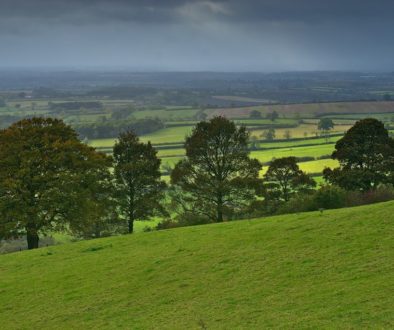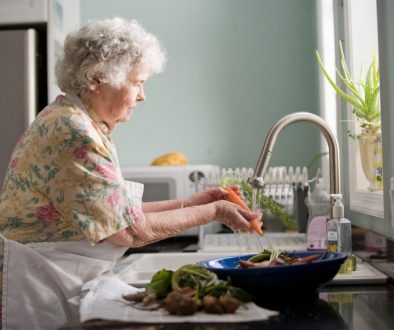Creative countryside – reproducing or redefining ‘rural’?
WHAT does the future hold for the arts in rural areas? Jessica Sellick investigates.
With the Glastonbury Festival, Alison Cooper’s ‘write to roam’ at the Yorkshire Sculpture Park and Cotswold & Forest of Dean declaring itself ‘Britain’s rural capital of culture’; the arts not only bring national and international performances to rural communities but also form an important part of the rural economy –creating jobs, supporting local businesses and attracting visitors.
Indeed many artists run businesses in rural areas; working in fine art, craft, design, advertising, music and digital media. Some artists work directly with rural communities, supporting them to tackle the issues that they face. The Rural Media Company, for example, uses film, photography, journalism and graphic design to strengthen rural communities and challenge disadvantage. LITTORAL promote the arts in rural regeneration.
The arts can also strengthen links with urban areas, challenging the way both communities think about ‘home’. Through the Watershed Landscape project, Pennine Prospects engaged a number of artists in residence, using their skills to introduce the landscape of the South Pennines to new urban audiences.
Yet many Local Authorities have reduced overall spend since the recession and large parts of council funded activity deemed ‘discretionary’ has ceased altogether. At the same time, other bodies are no longer adopting a rural arts policy within their arts programme. What issues are pertinent to the provision and development of arts in rural communities today? Is there a role for art which addresses key social issues such as housing, transport and other community needs or should the focus be on economics, branding and “iconic” art? What does the future hold for the arts in rural areas?
An Evidence Review from Arts Council England (ACE) in March 2014 concluded that “life without the collective resources of our libraries, museums, theatres and galleries, or without the personal expression of literature, music and art, would be static and sterile – no creative arguments about the past, no diverse and stimulating present and no dreams of the future”. Whilst the Review makes the ‘holistic case’ for the arts, it also acknowledges a need to find a framework and language to express the visible benefits of the arts. How can we understand the contribution that the arts makes to rural lives? I offer three points.
First, according to the latest Position Statement from Arts Council England (ACE) there is no need for a specific rural strategy or investment programme for the arts. ACE wants “to see rural communities benefitting appropriately from the totality of our support” and is encouraging rural arts organisations to leverage funding from Local Enterprise Partnerships (LEPs). The Statement contains a commitment to engage with rural stakeholders, including Local Authorities, and rural proof decisions in line with the findings of the independent review being carried out for Defra by Lord Cameron. This is in contrast to the Creative Rural Communities report in 2010 which set out proposals for a Rural Cultural Strategy. While the OECD Rural Policy Review found mainstreaming could fully address the needs of most of the rural population and define equitable sets of services; sparsely populated areas were not fully benefitting. How, then, can the distinctive arts ecology and unique opportunities and challenges in (sparse) rural areas be recognised? How can artists working in rural areas be supported? And how can we improve access for rural audiences?
Second, how can we fill evidence gaps in the causality between the arts and wider socio-economic impacts? Measuring impact is important and matters because it determines where resources are allocated and what goals are pursued. While the value of what we create goes beyond financial terms, often this is the only type of value that gets counted. Social Return on Investment (SROI) is a tool that measures much more – it is not just about money but captures the social, economic and environmental value of projects and programmes. ST-ART was set up in 2004 and offers a range of art activities for young people across North Lincolnshire. Organised through the Ropewalk, the project aims to develop creativity and channel young imaginations – primarily by working with 8 to 13 year olds in village halls and other rural community venues.
The project has operated on an ad hoc basis; in some years receiving significant support from partners and funders (e.g. Local Authorities, Arts Council England) and in other years struggling to secure income. A SROI analysis of the ST-ART project found that for every £1.00 of investment, the project had a return of £2.18 for local communities and economies. With public sector funding in decline and private sector funding being encouraged, commercial providers will want to see a return for their spend. Similarly, the Arts & Humanities Research Council (AHRC) is undertaking a two-year Cultural Value project to establish a framework that will advance the way in which we think about the value of cultural engagement and the methods by which we evaluate that value.
Third, how can we find ways of strengthening and expanding the arts offer within rural communities? How can enterprise support and mentoring, affordable finance, marketing, new products and new technologies for the arts be considered? Crowdfunding is an approach to raising capital for new projects and businesses by soliciting contributions from a large number of stakeholders. Crowdfunding has three types of models: (1) donations, Philanthropy and Sponsorship where there is no expected financial return, (2) lending and (3) investment in exchange for equity, profit or revenue sharing. Examples of arts projects funded through crowdfunder can be found here.
When North Country Theatre lost its ACE funding; they set up a ‘be an angel’ scheme. An angel is ‘an informal financial backer of an enterprise especially a dramatic production’ and a host of angels ‘a group of friends or colleagues, a school, a parish council, or a village hall committee’. Hundreds of people are now keeping this popular company on the road by supporting the organisation directly by donating a minimum of £100 a year for a three-year period. The Create Gloucestershire development hub was established by the art sector when financial support from the County and District Councils reduced. Artists and local authorities working together enabled grants previously given to 12 individual organisations to be pooled and invested against a set of collectively agreed development priorities.
For me, the long term sustainability of the arts in rural communities is dependent upon three key ingredients: (i) appreciating the culture, heritage and history of rural communities and thinking carefully about how to re-present this to audiences; (ii) entrepreneurship and investment; and (iii) a focus on supporting young people through employment, recreational and educational initiatives. Underpinning these factors is the role of central and local government, national development agencies and other cultural and economic bodies commitment to the value of the arts. Now more than ever the arts debate –understanding the impact the arts can have and how to fund it – is vital.
In March 2014 the RSN held an event on ‘arts and culture’. Copies of the presentations and a summary of how RSN members have responding to some of these issues can be found here.
Jessica is a researcher/project manager at Rose Regeneration; an economic development business working with communities, Government and business to help them achieve their full potential. She is currently providing Local Authorities with resources to measure ‘Social Return on Investment’ and supporting LEADER Partnerships in Nottinghamshire and Dumfries & Galloway during Transition. Jessica has previously carried out research for Defra on where ‘Big Society‘ initiatives are working well and for Oxfam on farm poverty. She can be contacted by email jessica.sellick@roseregeneration.co.uk or telephone 01522 521211. Website: www.roseregeneration.co.uk. Twitter: @RoseRegen


